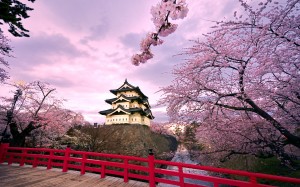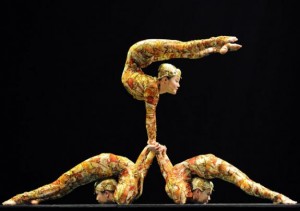 Japan Population 2013
Japan Population 2013
The current population of Japan is estimated to be about 126.66 million people, which is a decrease of about 0.89% from the last record of population. Historically, the population of Japan has been much greater than the population of South Korea, but less than the population of Russia. Based on the total land area and the total population of the country, the population density of Japan is estimated to be about 873.1 people per square mile.
Demographics of Japan
The largest ethnic group in Japan is the Yamato Japanese group, which makes up about 98.5% of the population. The next largest group is the Korean ethnic group, making up about 1.5% of the population. There is also some representation from the Chinese and also some indigenous people. The official language of the country is considered to be Japanese. In fact, 99% of the population speaks Japanese. However, there are three written languages used in the country: hiragana, kanji, and katakana.
Religion in Japan
Everyone in Japan receives the ability to choose what faith or religion to practice due to the freedom of religion guaranteed by the Constitution. The two largest religious groups in Japan are Shinto and Buddhism. The oldest of these religious is Shinto, while Buddhism was brought in around the 6th century. Some people even consider themselves to be participants in both religions. Some minority faiths in the country include Islam, Hinduism, Sikhism, and Judaism. Christianity is very rarely practiced in Japan.
Sports in Japan
The national sport of Japan is considered to be Sumo wrestling, which dates back to ancient Japanese times when it was used to entertain Shinto gods. Only men are allowed to participate in Sumo Wrestling. However, while Sumo Wrestling is the national sport, the most popular sport in the country is baseball. The Japanese call baseball Yakyu and it was brought to Japan by the United States. Baseball is so popular that some players even join Major League Baseball in the United States.
Sumo is a Japanese style of wrestling and Japan’s national sport. It originated in ancient times as a performance to entertain the Shinto deities. Many rituals with religious background, such as the symbolic purification of the ring with salt, are still followed today. In line with tradition, only men practice the sport professionally in Japan. The rules are simple: the wrestler who first exits the ring or touches the ground with any part of his body besides the soles of his feet loses. Matches take place on an elevated ring (dohyo), which is made of clay and covered in a layer of sand. A contest usually lasts only a few seconds, but in rare cases can take a minute or more. There are no weight restrictions or classes in sumo, meaning that wrestlers can easily find themselves matched off against someone many times their size. As a result, weight gain is an essential part of sumo training.
 Entertainment Industry in Japan
Entertainment Industry in Japan
The Japanese entertainment industry is one of the world’s largest and most innovative, and despite the culture and language barrier, various forms of Japanese entertainment have become internationally popular. The Japanese entertainment industry includes:
- Karaoke - Singing to the instrumental version of songs.
- Manga and Anime - Japanese comics and animation.
- Movies - the Japanese cinema.
- Amusement Parks - Amusement and theme parks in Japan.
- Pachinko - A mixture between pinball and slot machine.
- Hot Springs - About hot springs.
- Department stores - Japanese retail
Japan’s Declining Population
The number of elderly people aged 65 or over surpassed 30 million for the first time, accounting for as much as 24 per cent of the population – in contrast to children aged 14 and under which decreased to a record low of 13 per cent. As a result, the elderly officially outnumbered children, with a higher number of over-65s compared to children aged 14 and under in each of Japan’s 47 prefectures for the first time. Japan’s government faces taking strong measures to tackle the consequences of its ageing society, with a sharp rise in welfare costs and medical care demands forecast in coming years combined with a drop in workforce and national tax revenues.
Historical Population of Japan
The population of Japan has historically increased for the majority of the last half of a century. Near the beginning of the 21st century, however, the population had begun to level off and stay fairly constant from year to year. Eventually, near the end of this past decade, the population began to decrease.
| Year | Population (millions) |
| 1960 | 92.5 |
| 1965 | 98.88 |
| 1970 | 104.3 |
| 1975 | 111.9 |
| 1980 | 116.8 |
| 1985 | 120.8 |
| 1990 | 123.5 |
| 1995 | 125.4 |
| 2000 | 126.9 |
| 2005 | 127.8 |
| 2010 | 127.5 |
| 2011 | 127.8 |
Projected Population of Japan
The population of Japan is expected to continue this recent trend of a negative population growth. The birth rates of the population remain much lower than the death rates. The birth rates will remain fairly steady as they range from 8.2 births per 1000 people to about 9.0 births per 1000 people. In contrast, the death rates will continue to increase over the next 37 years as they range from about 11.6 deaths per 1000 people to about 15.0 deaths per 1000 people. Despite a positive net migration rate, the population will still decrease over the years.
| Year | Population (millions) | Percent Increase |
| 2015 | 125.75 | -0.72% |
| 2020 | 123.599 | -1.70% |
| 2025 | 120.889 | -2.20% |
| 2030 | 117.593 | -2.70% |
| 2035 | 114.36 | -2.80% |
| 2040 | 111.434 | -2.60% |
| 2045 | 108.617 | -2.50% |
| 2050 | 105.68 | -2.70% |